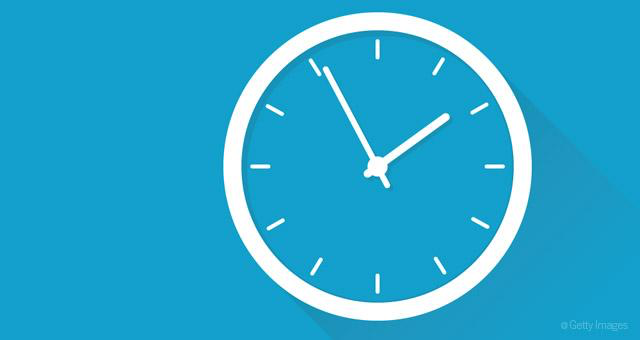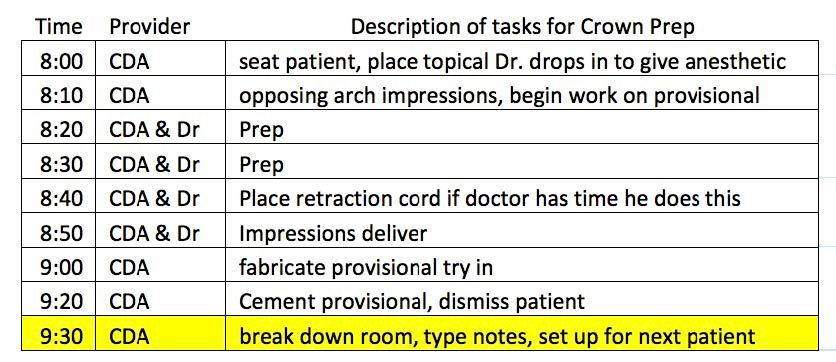Simple and effective tips to get your dental practice's schedule back on time
Throughout my years as a consultant and speaker, a common team meeting topic is how to improve patient service.

Throughout my years as a consultant and speaker, a common team meeting topic is how to improve patient service. The lists created often sound like this: create a patient reception area refreshment station, get TVs for the reception area and the treatment rooms, buy iPads and put games on them, buy better, more current magazines, and so on.
This brainstorming is great. An idea is an idea, without judgment. However, when I ask the question differently such as, “What can WE do to improve our patient service?” “What systems are the patients complaining about?” or “What did the last few patients or families that left the practice say as to why they left to go to another dental office?”, the discussion then centers on different ways to improve patient service.
One of the leading complaints and reasons why patients leave a practice is that they are never seen on time. Patients want their time to be respected. They all lead busy lives and coming to the dentist has to fit into that life. When they drive through the crosstown traffic, give up their lunch hour, and arrive on time only to be seen late, will the refreshment station or the TV alleviate their anger, disappointment, or feelings of disrespect? Providing comfort, entertainment, and refreshment is icing the cake, but the first step is to create a perfect cake: Fix your scheduling system so that you can run on time.
4 frequent conversation blunders you make with your patients
Time is money, time is precious, and time disrespected sends patients to other practices. Running late is a negative that can be easily fixed. This is a system called your scheduling system. Yes, I am a realist. I know that occasionally (and I really do mean occasionally), a system. Yes, I am a realist. I know that occasionally (and I really do mean occasionally), a schedule may run late. My experience shows me over and over again that a wellscheduled practice runs on time, sees their patients on time, does the dentistry they promised to do in the reserved time, and gets the patient on his or her way within the time frame they scheduled.
Practitioners tell me, "Nothing stresses me out more than running behind schedule. I know everyone's waiting, and our stress level gets higher and higher. It gets harder and harder to explain to patients why we seem to always run late.”
Overcoming 5 common patient objections and going from "no" to "yes"
The scheduling system defines the practices efficiency and effectiveness. It makes or breaks you in so many ways.
Learn more from the author and see examples on the next page...
The first step towards running on time is scheduling the right amount of time for procedures, rather than playing a guessing game for each appointment. Have a team meeting and work together to create procedure analysis sheets for each of your major procedures. The time invested in creating the sheets will keep the practice caring for patients on time down the road.
The purpose of creating procedure analysis sheets is to identify:
- When, in each appointment, the doctor is with the patient and for how long.
- When, in each appointment, the assistant is with the patient and/or with the doctor and for how long.
- The total time the patient will be in the clinical area for his or her care.
- The length of time that the treatment room (operatory) will be occupied.
These procedural analysis forms will give the scheduling coordinator clear guidelines for reserving patient time, operatory time, assistant time, and doctor time. It will help to prevent the ever famous “double booking” of doctor time. Two-column or three-column scheduling was never designed to fill up every open slot with a patient service. It was designed to legally optimize the use of the assistant’s skills according to the respective state laws and to effectively manage the treatment rooms, creating a scheduled flow for the doctor to move from patient to patient efficiently.
The procedural analysis forms will create a puzzle piece that is transferrable to the appointment system. These analysis sheets are the single-most important element for achieving excellent scheduling. Without this information, the scheduling coordinator cannot create the perfect picture for practice success.

On the left is an example of a procedural analysis form: (9) 10-minute units the operatory will be occupied, (4) units the doctor will be engaged, and (9) units the assistant will be busy.
Complete a form for each major procedure and, at the bottom of the form, list what the time breakdown will be for multiple teeth, multiple surfaces, etc.
Once the investment is made in creating your analysis forms, it is time to check the accuracy of the time predictions. Take the sheets to the clinical area and time the steps. Make corrections and then give them to the scheduling = coordinator

This scheduling sample was created from a practice that completed their procedural analysis and then began scheduling to their new templates. Notice that there is NO (X) collision, doctor is not being cloned and the doctor is, in fact, flowing from room to room without conflict. In this example, a half-day’s production can accomplish a great deal. Scheduling becomes a puzzle piece strategy system. You will be matching assistant time to assistant time, making sure that doctor time does not collide with doctor time in the next column and that the treatment chairs are not overscheduled. All of these outcomes will prevent the practice from running behind schedule and ensure that the patients’ time remain respected. Great patient service creates raving fans.